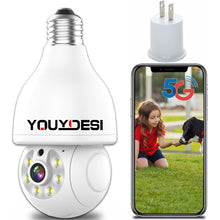Given that security systems consist of a variety of devices such as cameras, infrared equipment, pan-tilt-zoom (PTZ) units, monitors, displays, digital video recorders (DVRs), and matrix controllers, a comprehensive thermal solution is imperative.
Applications of Thermal Conductive Silicon Pads in the Security Surveillance Industry:
Image Processing Modules:
Image sensors, crucial for capturing, storing, transmitting, processing, and reproducing images in surveillance cameras, generate substantial heat and are highly sensitive to volatile pollutants. The use of regular thermal interface materials in high-temperature environments can result in the volatilization of siloxanes, which can adhere to optical lenses and contaminate the photosensitive module, affecting image quality. Therefore, it's crucial to select materials with low oil and low volatile characteristics when choosing thermal conductive materials.
Mainboards:
Excessive heat generated by electronic components (CPU, memory, GPU) on mainboards can destabilize camera operation, leading to automatic reboots or system crashes. This not only results in the loss of critical surveillance data but also impacts the camera's lifespan. The use of thermal conductive silicon pads can assist in heat dissipation by filling the gaps between the heating electronic components on the mainboard and the aluminum die-casting casing, efficiently conducting heat to the casing.
Power Boards:
The heat produced during camera operation can cause a rapid increase in internal temperatures. Failure to dissipate this heat promptly can lead to continuous temperature rise and component failure, reducing the camera's reliability. To ensure stable and reliable camera operation, it's essential to reduce the working heat load on core components and alleviate the thermal stress concentration on the circuit board.
Pan-Tilt-Zoom (PTZ) Cameras:
In many cases, PTZ camera housings lack sufficient ventilation. This means that the heat dissipation of PTZ cameras might not be ideal. When a camera operates, poor heat dissipation within the housing can lead to excessive internal temperatures, potentially causing other electronic components inside the camera or the camera housing to malfunction or get damaged. To address this, thermal interface materials are used to transfer heat effectively, maintaining a safe operating temperature for the product.
In the realm of indoor/outdoor home security and wireless cameras, using thermal management materials, such as thermal conductive silicon pads, is not just a choice but an absolute necessity. These materials help ensure reliable, uninterrupted performance by efficiently managing heat within the surveillance equipment, ultimately guaranteeing the security and functionality of the system.












